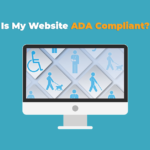Reputation management is a touchy subject for a lot of businesses. Reviews and other indicators of public opinion are often the first things consumers look at when they’re considering spending money on a product or service – and with good reason!
People put reviews up because they had an experience that they wanted other potential consumers to know about. Whether those reviews comprise warnings or recommendations, that social proof tends to stick in others’ minds with way more tenacity than slick ad copy or catchy jingles ever could.
Paid Reviews Aren’t Just Fake News, They’re Bad News.
In general, people tend to pay more attention to negative reviews than positive ones, so it’s understandable why getting one bad review may seem like the end of the world for a business owner.
The temptation to resort to drastic and dubious measures – like buying positive reviews to overshadow the negative – can be strong.
Here’s why you shouldn’t give in to it:

People Can Tell Fake Reviews from Real Ones
Tell me, which of these 5-star reviews (for different companies) looks like it was written by a real customer?
[REDACTED] has a very professional hard-working team of men working for them. They are more affordable than any other moving company around. They are very punctual, efficient and they handle all items with care as if they were moving their own belongings. Thank you, [REDACTED]. I will absolutely be referring you to others!!!
Or
The very nice and proficent PA (I forgot her name) and equally adept asst. [REDACTED] were great. Didn’t feel a thing and was well informed. Thanks, [REDACTED]
As you probably figured out, the first review is the fake. It is enthusiastic, uses a lot of adjectives, looks like it was fairly carefully edited, and does not refer to a specific encounter with the business.
The second review is real. Real people sometimes write their reviews in a hurry, don’t spell check, don’t use complete sentences, and forget details. Nobody would ever accuse this review of being fake, because it doesn’t necessarily contain the kind of obvious praise that a business would shell out money for. It’s just a person briefly recounting a satisfying experience.
Another indicator to consumers that good reviews may have been bought is that they tend to be surrounded by a combination of other, nearly identical 5-star reviews and vastly different-looking negative reviews.
A company with real reviews is more likely to have a diverse spread of 1-5 star reviews indicating varying levels of satisfaction that generally trend either positive or negative.
Consumers Who Notice Your Fake Reviews Won’t Trust You
Consumers generally expect even the best businesses to have a few negative reviews – after all, you can’t please everyone.
These negative reviews are actually helpful to consumers sometimes, because they let them know what the worst possible outcome for their purchase could be, allowing them to gauge the risk of the transaction.
In short, negative reviews aren’t, in and of themselves, deal-breakers for consumers.
What can be a deal-breaker, however, is an obvious indication that the business is trying to deceive people for profit (Read: a fake review).
Nobody wants to do business with a self-serving liar. Especially not one who insults them by underestimating their ability to tell fiction from reality.
Buying Reviews Can Land You In Legal Trouble
Fake reviews can violate a number of rules and regulations defended by the FTC and upheld by courts across the US.
First of all, a paid review can be considered a type of advertisement, and if it poses as an organic review and gives false information without disclosing that it was paid for, that constitutes false advertising:
“If an endorser is acting on behalf of an advertiser, what she or he is saying is usually going to be commercial speech – and commercial speech violates the FTC Act if it’s deceptive. The FTC conducts investigations and brings cases involving endorsements under Section 5 of the FTC Act, which generally prohibits deceptive advertising.”
The FTC has already brought its first case challenging fake paid reviews on an independent retail site, and it isn’t likely to give up after just one.
The FTC keeps a whole Endorsement Guide (complete with examples and explanations) to help businesses understand what is and isn’t allowed in terms of paid endorsements and reviews. It also has a .com Disclosures guide to help people understand how they should disclose paid endorsements.
How to Manage Reviews the Right Way
In a perfect world, all you’d have to do to get lots of positive reviews is:
- Maintain impeccable standards for your products/services and a cheery demeanor in all customer interactions
- Politely ask all of your customers to leave reviews
While those are both good things to aspire to (and 2 is completely do-able for everyone), nobody is perfect all the time, and some people will leave negative reviews no matter what.

That being said, here’s a brief Bad Review Contingency Plan you can follow:
DO:
- Respond quickly with a reasonable answer so it is clear to review readers exactly what happened.
- Project an understanding/apologetic (but not conciliatory) tone for minor issues such as imperfect products or less-than-satisfactory experiences.
- Apologize and admit that something went wrong if the issue has to do with serious issues such as destroyed products, harassment, hate speech, sexism, racism, or other obvious ethical breaches. Propose a way to fix the issue and prevent future incidents.
- Offer to settle the issue in a private conversation.
- Remain firm and professional throughout exchanges with customers.
- Report the review if it violates the review platform’s conduct policies.
- Encourage customers to update negative reviews to positive ones if their issue was satisfactorily resolved.
- Thank customers for their feedback.
DO NOT:
- Ignore negative reviews
- Respond defensively or in a hostile tone
- Argue publicly with the customer
- Adopt a hostile tone in private conversation with the customer – they can always bring it back to the public square
- Avoid the question of whether your business practices should change if you get many bad reviews about the same thing
What You Gain from Being Good
By following these Do’s and Do Not’s, you let customers know that you care about their input and are committed to improving your business based on their feedback.
You also earn the trust of review readers who are considering purchasing from you by maintaining an open and honest dialogue with your customers.
These practices may not keep you sitting at 5 stars 24/7, and you may not see results immediately, but they will ultimately provide your business with good social proof and keep you out of a whole lot of trouble. You may even learn more about your customers!













Leave a Reply